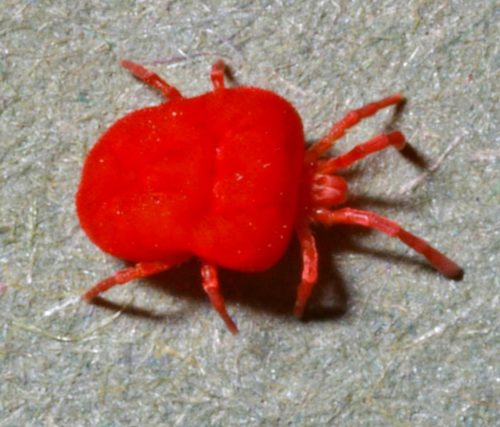Harvest mite, this 1 to 2 mm mite lives on insects and insect eggs. Its larvae prey on vertebrates, including humans.
Do not confuse with:
Velvet mite (Trombidium holosericeum)
Also known as:
Autumn chigger
Harvest mite (Trombicula autumnalis). This 1 to 2 mm mite lives on insects and insect eggs. The mites look like little red spiders.
In August, the mite lays eggs in warm weather from which minime larvae (+ 0.25 mm) emerge around harvest time. These larvae require one meal of half-decomposed cellular fluid or cellular tissue of vertebrates for growth. So these larvae bite cows, chickens, goats, bi
Where to find
- Are commonly found
Control
Once bitten by the larva, lubricating anti-itch medications may help.
Prevention
Prevent bites by the larvae by:
- wear boots
- keep gra
ss short - not walking bare-legged in the garden (August, September)
- Lubricate with a Deet-containing agent.

